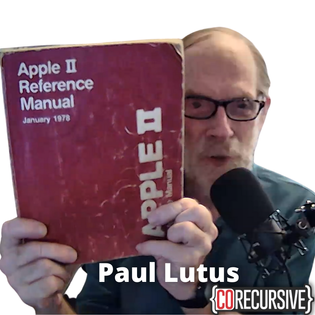Introduction
Adam: Hello, and welcome to CoRecursive. I’m Adam Gordon Bell. Each episode, a guest shares the story behind a piece of software being built. Today’s episode is about remote work. Well, sort of. I’ve been working from my home office for almost exactly 10 years now. And when everyone started working from home, I felt like I had some tips to share, like to break up the Zoom meetings you can just go for walking meetings. Just call in on your phone. It makes a big difference. But I’m not totally sure we figured out all that remote work can be. So I found someone who has something to teach me about remote work. I think that he might be the original remote software developer. He left California behind for a lower cost of living in Oregon. And from Oregon, he developed software for Apple. But the kind of surprising thing is he did this all in 1976. And he did it so well he became rich and even briefly quite famous.
Paul: That’s 60s artist, whose name escapes me, said everybody is famous for 15 seconds. I was famous for slightly longer than that. But during that time, it was nuts. People would show up and try to ask for autographs and stuff. It was weird. I mean, it never occurred to me that people would want the autographs of a computer programmer. I mean, that’s just not like the normal, famous person kind of an image I have in my mind.
Adam: That was Paul Lutus. He built Apple Writer for the Apple II. And he thinks there’s something that we, as a profession, are missing, something that we’ve forgotten. But to understand his story and how he got on the front page of the Wall Street Journal, how he got interviewed for national TV programs and all for writing software, we need a little background.
Street Electrician
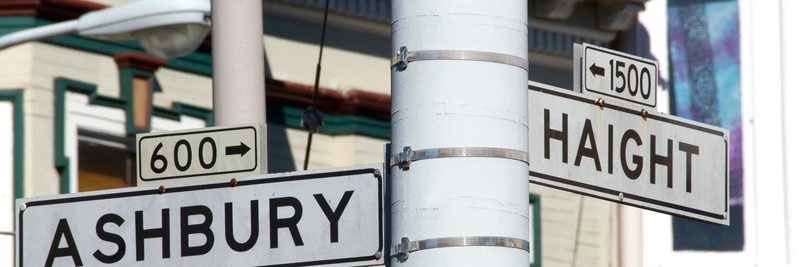
Adam: Paul grew up poor and was always into electronics. People would bring him old broken TVs or radios to tinker with. And he’d try to repair them. He dropped out of school and he traveled around the U.S. a bit, living a somewhat nomadic life. Then he moved to San Francisco around 1967.
Paul: I would be on the street in San Francisco going, “Oh, this is kind of cool. I could just live here and I can go find somewhere to find some food.” And a person walked up and said, “I hear you know about electricity. We need to have a light switch,” blah, blah, blah. And I would do that. And that ended up being some way I made a lot of money without actually being officially hired by anybody. People just knew that I was out there and that I could do that kind of work. So that ended up being something that tided me over, even in those times when I was, for all practical purposes, a street person in times when being a street person was still romantic, which that’s obviously gone away now.
Adam: Yeah. I can’t imagine having a problem with electricity here and getting somebody from the street to just monkey around.
Paul: It’s a little bit different in the Haight-Ashbury in the 1960s. It was pretty obvious to a lot of people at the time that there were a lot of very skilled people out there who were there by choice. They weren’t necessarily all teenagers or all druggies or whatever. That was actually the summer of love. That was the last time when living on the street was regarded as a romantic idea. And it lasted about 12 months. And then it was increasingly a lot of people who were into hard drugs or who were dealers or whatever, a bunch of other weird things. 1967 was that a golden moment where you could live on the street in San Francisco and people would come around and they’d give you the benefit of the doubt. And people were pretty well-behaved. But after that, it all went downhill very quickly.
The Space Shuttle
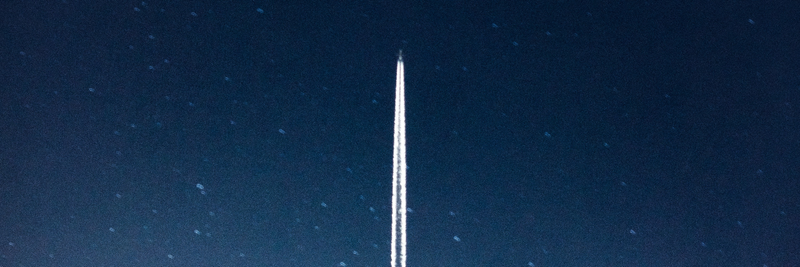
Adam: So let’s fast forward to the early 70s. The 60s are gone. Street living has lost its romance and Paul needs a job. And he sees an interesting job listing.
Paul: This was a contractor for NASA who was charged with the responsibility to create all the lights on the NASA space shuttle. And the contract called for them to create dimmable, fluorescent lights, which hadn’t been done until then. And when I read that, I went, “Oh, that sounds interesting.” And it was something that I felt particularly challenged by. So before I went in for the interview, I sat down and worked out a way to do it. And I showed up and there was a room full of college degree holders all applying for the same position. My turn came around. The interviewer said, “I’m not too happy about what you have on your resume here. You don’t have a college degree.” At that moment, I pressed my schematic diagram in front of him and over the top of his notes that he was looking at. And he happened to have a background in electronics and he looked at what I had proposed and he realized it would probably work. And so that pretty much short-circuited the whole process.
And so even the fact that I was a seventh grade dropout prevented him from throwing me out of the office. So all these college degree people who had no other particular qualification except that they had a college degree were all sent home. And I got the job.
Adam: When you left, did you punch the air and say yes or were you excited?
Paul: I went, “Well, now I have to do this.” It was one thing to write a diagram and another thing to make a hardware embodiment of a schematic diagram that was man rated that would be qualified to be on a spacecraft with humans in the air. And that changed everything of course, because up until then, I had designed circuits that were interesting, but not necessarily the safest thing to have in space, all those special considerations that you have designing spacecraft.
Dimmable Fluorescent Lights
Adam: It turns out NASA has higher standards than people who want their broken TV repaired, which led to some challenges, but NASA needed these dimmable fluorescent lights.
Paul: The reason for it is that if you’re on the sunlit side of the earth, you need bright fluorescent lights inside the cabin to be able to simultaneously look outside the spacecraft and read the notes on the desk in front of you. But 45 minutes later, you’re on the dark side and you still want to be able to function. And that’s why it was fluorescents by the way. Fluorescents, apart from being more efficient, also has the same color temperature regardless of the brightness of the lamps. So if you dim down the fluorescent lights, they’re the same color temperature. And if you have a color coded diagram in front of you, you can still use it accurately.
Adam: These lights were used in the prototype space shuttle. And they worked without issue. They work so well, in fact, that they were used in all of NASA’s space shuttles.
Paul: So whenever you see a newsreel of a shuttle interior with lights, those are my lights.
Office Work in the 70s
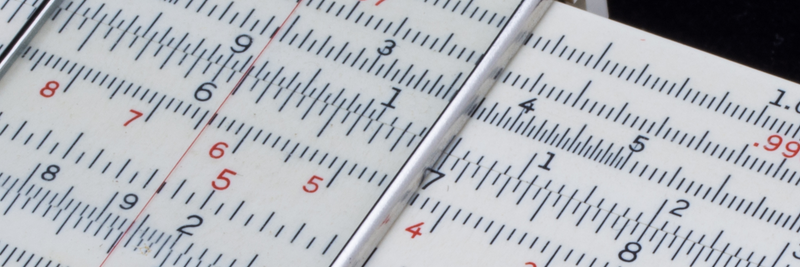
Adam: That first shuttle flight using these lights, it wouldn’t be for another four years. And that last shuttle flight that would use these lights, it wouldn’t complete until 2011, nearly 40 years later. For me, it’s hard to picture what working in an office would be like in 1973.
Paul: There certainly were computers on the space shuttle of a primitive kind. But in my engineering tasks, I got to use my programmable calculators to calculate various values. But as far as having computers in an office of the kind that we are accustomed to seeing now, no, not really. I actually introduced programmable calculators to where I worked. Up until then everything was slide rules. In fact, I can remember interviewing technicians to work for me, and they had to know how to operate a slide rule. That was one of the requirements. In my office at the subcontractor was a big glass box on the wall. And it said, “In case of emergency break glass.” And inside the box was an abacus. I only mention that because that’s how far things have changed.
Adam: The first computer Paul used didn’t even look like a computer.
Programmable Calculator
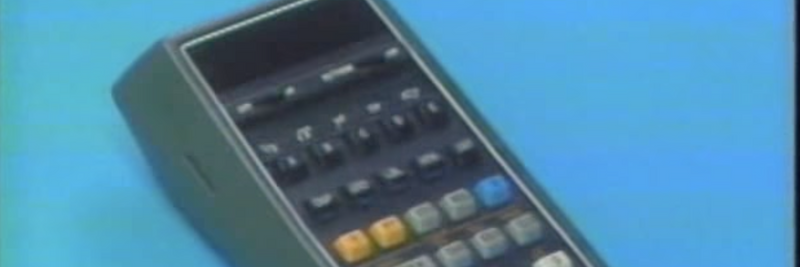
Paul: My first encounter with anything resembling a computer was early in the 1970s, they had programmable calculators and I got one of those. And I thought that was the greatest thing ever.
Adam: Programmable calculators made by HP were sort of the first personal computers. The HP-65, the first pocket, programmable calculator looks like a bulky scientific calculator with some extra buttons for programming. And yeah, you could write programs for these calculators. The programs were usually formulas like converting Celsius to Fahrenheit, but they could have up to 100 steps. And Paul was creative.
Paul: And so I started writing programs for that and publishing magazine articles. I had one that explained how to calculate sunrise and sunset times, another one that did a model of the solar system. And the third one that was a game where you would draw on a piece of graph paper, you’d draw an earth and a moon. And you’d put in numerical values in the calculator program and you’d have the spacecraft take off step-by-step, and you make little dots on the graph paper. And that was the earliest computer game I ever wrote, I guess you could say. And you could actually figure out a way to get all the way to the moon and land without crashing. And it was actually published in a magazine as a computer game. And that was around 1972 or thereabouts.
Adam: At around the same time, at HP, an engineer was also excited about the processing power of these calculators. His name was Steve Wozniak and he’ll come up later.
The Jet Propulsion Lab
Adam: Anyhow, while Paul was working on the shuttle lights, his side hustle of writing programs for calculators gets the attention of the Jet Propulsion Laboratory, the JPL. The JPL is based out of Caltech University and they designed the current Mars robot, Perseverance, for example. Back then programmable calculators were starting to make their job easier.
Paul: And I got a letter from JPL and they said, “We want to use this program. And you made a mistake on Pluto and we want you to fix it.” And so I had a numerical error in the position of Pluto, and I didn’t say, “Well, Pluto is not really a planet.” That was too early for me to use that excuse. So I fixed my program.
Adam: JPL had launched the Viking 1 and 2 space probes in 1975. And they were on their way to Mars. But someone came across Paul’s computer program for calculating the positions of planets in the solar system.
Paul: And so the real software that governed the flight of the spacecraft was already in place, but people wanted to be able to do various kinds of calculations at their desks with their newly acquired programmable calculators. And that was why my program fit in. I was very flattered by that.
Adam: This was all in the time of the space race. Since the 50s, the Soviets and the Americans have been battling and out for dominance in space. And everyone was excited about space travel. And the shuttle program was the future of space. Paul was right in the middle of all that. And he could have had a great career. I mean, he was already writing programs that the JPL was using. But instead he would take a hard left and it would change everything. And it was all because he wanted a different lifestyle. He didn’t like his current living situation.
Into the Woods
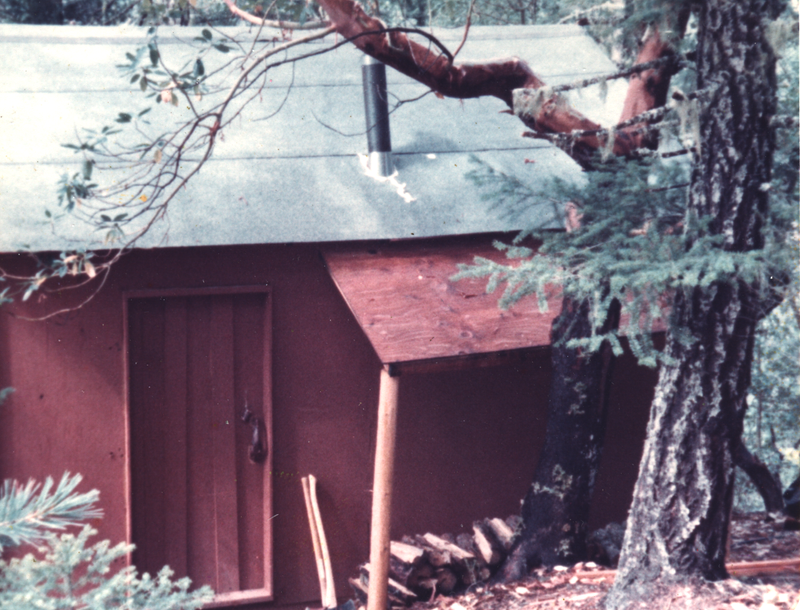
Paul: I hated living in cities and I hated paying rent. I regard rent as this parasitic payment that you don’t get anything else in response to. So I started thinking about, I’ll go back to the woods, I’ll live some Sylvan romantic life out in the wilderness. And I found some cheap land in Oregon and acquired a piece of land and told the people at the place I was working that I was resigning and I was going to go off and live in the woods.
And their immediate response was you can be a consultant. Come back every month. Because the thing about a job like that, which I didn’t realize when I first got into it, was part of it was designing a circuit or whatever, some actual useful creative endeavor. And the other part was maintaining all the paperwork in order to keep up with what NASA requires, which is a huge load of paperwork. It’s said about the space shuttle that if you piled up all the blueprints and documents, it was larger and weighed more than the shuttle itself. And anyway, so they settled on a compromise. They had me come back once a month for a couple of days and be a consultant and solve issues that way.
Adam: And why did you hate the city?
Paul: I always thought of city life as a terrible compromise compared to living in the country. Paying rent on an apartment, being able to hear your neighbors through the walls and all that kind of stuff. I wasn’t going to be able to just buy a house. That might’ve solved it that way. But I didn’t have that kind of money. So the only thing I could think of was some less expensive way to get out of the city. Buy a cheap piece of land, build a cabin.
Adam: Okay. So this part seems very modern to me. Maybe not the building a cabin part, but since COVID started, I know so many people who left New York or the Bay Area for smaller, cheaper places. So that’s what Paul did. He bought some land in a remote part of Oregon. It was off a dirt road and up a 400 foot hill. He hauled lumber in on foot and he built himself a 12 by 16 one room cabin to live in. He set a budget for himself. If he could live on $40 a month, then by his estimate, he could last a decade. And if he found ways to make money while he was there, he could last even longer. But to do that all, he’d have to skip electricity and he’d have to get kind of creative about food.
Paul: Blueberry bushes in the summertime, I could eat a lot of blueberries. You’d be surprised. A bag of beans, bag of rice. Those worked. I knew that I could make those last and oatmeal, which is my favorite breakfast. I raised vegetables in a garden. I had chickens. And I wrote programs for my programmable calculator. And I wrote a few magazine articles. And the irony was, after I got my cabin, I had solved the issue I thought I had solved. I immediately started thinking of ways to make it more interesting.
The Apple II
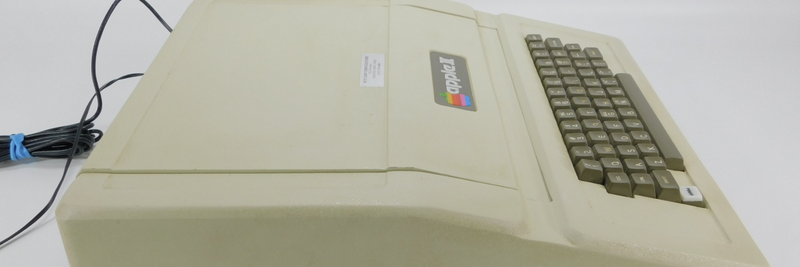
So I was reading a Scientific American magazine by kerosene lantern in Oregon in my little cabin. And it was an ad for an Apple II. And I went, “Wow, an Apple II. Oh, I got to have a computer.” Because I’d already had programmable calculators, I had already had the orientation that it would be a useful creative thing.
And so I did something completely crazy. I had this nest egg of not very much money by modern standards that was supposed to tide me over until I could think of some way to make a living in Oregon. And I took a third of that money, which was $1,600, and I bought an Apple II. I was remonstrating regularly about how stupid the whole thing was. It was a big risk I was taking, obviously. I mean, it could have just been a toy and I would go, “Ah, this was a stupid purchase,” blah, blah, blah. I bicycled my order to the post office. I didn’t have a car. Put the envelope in the postbox and went, “You crazy fool. You’re just giving away a third of your money.”
Adam: It will turn out to be money well spent. The Apple II wasn’t a toy. Steve Wozniak designed the Apple I, the first Apple computer, while at HP. And he offered it to them, but they weren’t interested. It was sort of a kit. So he and Steve Jobs started the company and they started selling this Apple I. It sold well and so Wozniak left HP and they started making it selling the Apple II, which was a full personal computer. The Apple II has the same general shape as the Commodore 64s that I would see when I was in school in the late 80s. It’s just a bit smaller. It’s a plastic box. It’s vaguely typewriter-shaped with a keyboard on the front and a 12 inch CRT monitor on top. That’s what Paul saw in the ad and ordered. And when it arrived, Paul had a problem. He didn’t have electricity.
Getting Electricity
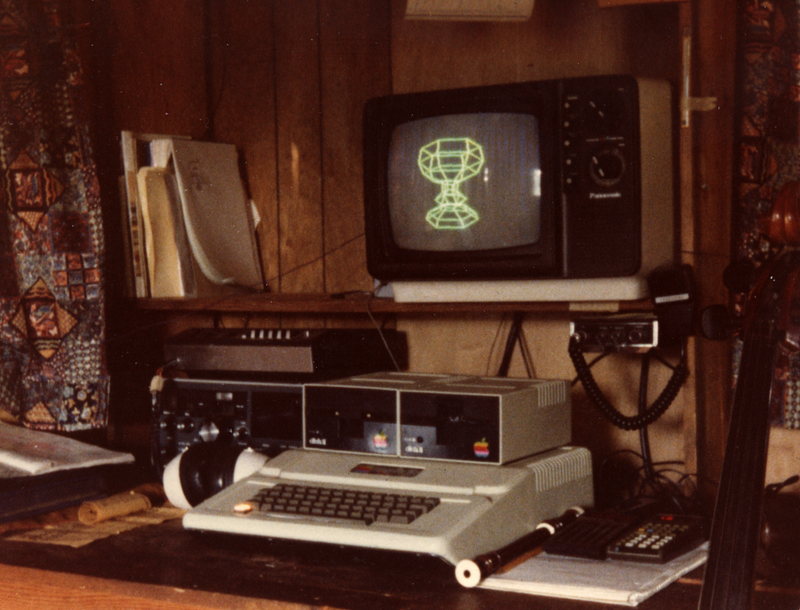
Paul: So I called the power company. I said, “I want a construction permit.” And they put it in a construction box down in the valley below where my cabin was located and I strung… Hold your horses. I strung a 1200 foot extension cord from the construction box in the valley below up to my cabin to power the Apple II. I’m not making this up.
Adam: Is there any limit on the length of extension cord that you can reasonably run?
Paul: It depends on how much power you want to draw from the far end. And the Apple II only required like 30 watts. And so it was all right. But it’s certainly true that if I had turned on an electric heater, the whole house would have gone dark because of the amount of power required. But I knew that because that was my line of work until then. I knew exactly how much power I could get out of the cord.
Adam: So Paul gets his power and he starts up his Apple II.
Paul: And I opened up the instructions and it said type Ctrl+B to enter basic. I had never owned a computer before. I knew nothing about computers. I only knew about programmable calculators, which is quite a different thing. And so I sat in my little cabin typing C-O-N-T-R-O-L B over and over again thinking, what’s going wrong? Maybe it’s broken. Maybe it got damaged during shipping. And I finally went, “Wait. Wait a minute, wait a minute. There’s this little key over here that says, CTRL. Maybe they mean CTRL plus that and B.” That’s how little I knew about computers that day. I got it running. I got into basic and within a month I thought basic was dumb because it took so long to process things.
Apple World

Adam: So Paul starts making programs for the Apple II. He was already writing for magazines and writing programs for calculators. So word started to spread about what he was doing. He started corresponding with Apple. He would send them programs he created. And he would send the programs to magazines. One program he writes that’s heavy on color and graphics catches some attention.
Paul: It was called Apple World and you could design a house and you could make it spin around on the screen. And it was pretty cool. And it was something that people wouldn’t have expected the Apple II to do. And a film crew came out to do a personal profile on me from the old Tom Snyder show.
Adam: This TV segment will be Paul’s first taste of fame.
Paul: I didn’t really think very hard about what that was going to do. Guy lives in the woods and he has a cello and he hangs out and he has kerosene lanterns and he has a computer and he writes computer programs. And it was kind of a romantic image, which I happened to be in the middle of. And because it had been on television, on national TV, people were calling up. Do you have Apple World for sale? Blah, blah, blah. So I got a letter from somebody in New York who was a marketer and he said, “We want to give you $33,000 for your program.” And I think he was thinking that’ll start a bidding war and I’ll say, “Oh, no, no. You want to give me more than that.” Whatever. Which of course what actually happened was $33,000? That’s 10 times more money than I have in the entire world. And so I said sure, and suddenly I was richer than I expected ever to be.
It was at a time when I literally had one tenth of that amount of money in the bank. And so I wasn’t going to go sit around and go, “Hey, well, $33,000. That’s pretty bad. How about twice that?” Whatever, there was no way I was going to scotch the deal by starting to negotiate whatever.
Word Processing
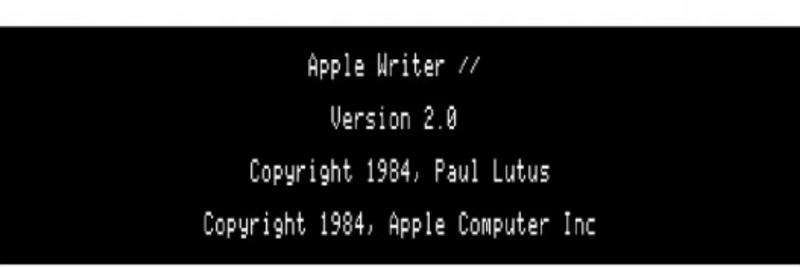
Adam: Paul made this money on Apple World because he managed to get it on TV, but also because it had consumer appeal. Personal computers in 1978, they were the domain of enthusiasts. But to sell a lot of computers, you need a killer app. You need something that appeals to everyone, something that people will buy a computer just to use. And that’s why Paul’s next idea would change everything for him.
Paul: It was 1978 and a magazine had asked me to write an article about Einstein’s theory of relativity would they knew I could write. So I had a whole bunch of pieces of paper, each with individual parts of a proper article about relativity. And I tried to figure out what order to put them in. Do I say this first or do I say that first? And I’m moving the pieces of paper around and then I have a light little light bulb go off over my head. And I went, wait a minute. I could write a program on my Apple II to automatically put these in the right order by moving them around on the computer screen. And so I wrote that program and I got rid of all my little pieces of paper.
And as the months went by, the article improved slightly, but the program improved a great deal. Apple heard about it. And they said, could you show us this program? It sounds like a word processor. I didn’t know what that was, but I said okay, okay. I put it on a floppy disk, a five and a quarter inch floppy disk, which I have several stories about those stupid floppy disks. But this one is, it was the obvious way to send a program through the mail, by putting it on a floppy disk and putting the floppy disk in a big manila envelope, which it had to be pretty big because of the size of a floppy disk, and then addressing the envelope and hoping that the post office didn’t mangle it so badly that it wasn’t unreadable at the other end. That was the normal way. That and showing up of course. You could always show up. That would work, too.
But for the majority of transactions in those days, I would send off a big floppy disk with a copy of the program. So I run into the post office in my bicycle and I put the envelope in the mailbox and I said, “This might be popular. Maybe they’ll give me $100.” And within five years I had made six million dollars off that program. Converted into 2021 dollars, That’s $15 million.
Apple Writer & VisiCalc
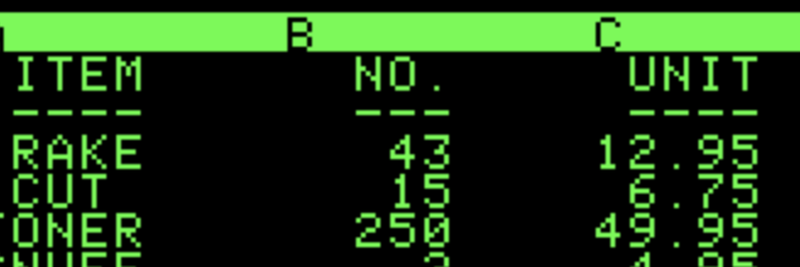
Adam: To understand why this program would become so successful, we need to understand how personal computers became serious business tools. I’m putting that in air quotes, but basically how personal computers became a fixture of the modern office.
Paul: In those days they had already saturated the market of hobbyists and computer enthusiasts. And they wanted to reach out to the general public. And for that, they had to have end user programs. One of which was VisiCalc.
Adam: VisiCalc was the first spreadsheet software, and it changed accounting forever. People bought Apple IIs just so they could use VisiCalc. VisiCalc replaced the manual process of doing calculations with a computer program. And Paul’s program was an attempt to do the same thing, but for typewriters.
Paul: I wanted to call it LexiCalc by the way, which never happened. They wanted to call it Apple Writer. And anyway, the first version of Apple Writer was in 1979 I believe it was. I sold the first version of Apple Writer to Apple for $7,500, which I thought was a lot of money.
Adam: So how did people buy it?
Paul: It was marketed by Apple either by mail order or through computer stores. Apple actually had a package called Apple Writer, a big box with a manual and a couple of floppy disks. And it was just a retail deal, which people who were older will remember that there was a time when software was sold through software stores, that there was a box on a shelf. And you’d pay and take the box home and there would be floppy disks inside and the big instruction manual, whatever. And that was how Apple Writer was marketed for years.
Fame
Adam: So Paul has $7,500 more in his bank account. And Apple Writer goes up for sale with his name on it when you start it up. Paul’s fame continues to build. And the Wall Street Journal writes a front page story all about him, which they title, Mountain Hermit Makes Apple Sing.
Paul: It was in keeping with the Wall Street Journal conservative outlook that people rising by their own bootstraps and they can start their own business and they don’t have to rely on the government, all of which has been in some context true. And so I was an example of that. I was in this cabin and I was making software. So that was an obvious article for them to put on their front page. Look at this, this guy succeeds and in the most conservative way possible. He’s making his own products. He’s a factory of one making his own products. And they were paying him for them and American success story, that whole deal.
But anyway, that resulted in a lot of people coming out and trying to find me in the woods. I couldn’t believe it. People would actually show up. Or they would send… This is very funny. They would send letters. They would go to the local post office and they would say, “Send this to Paul Lutus.” And they would just put it in the mailbox. And they would find me and they would figure out how the way to get it to me without any zip codes or addresses or anything because I was pretty well known.
What is it that that 60s artist whose name escapes me said, everybody is famous for 15 seconds. I was famous for slightly longer than that. But during that time, it was nuts. People would show up and try to ask for autographs and stuff. One guy traveled all the way from Louisiana. He showed up on my doorstep and he said, “I’ve wanted to meet you for some time now,” in a mock serious voice.
Adam: And then what?
Paul: We went to lunch and I waited until his illusions were shattered and then he went away. I don’t know.
I wasn’t actually cut out to be a famous person. I don’t have the right instincts for it. Every once in a while, you’ll see a headline on an article that belies the content of the article and the Oregon Hermit, it was one of them. Obviously not a hermit if people are coming to your door and taking pictures and asking you to tell them all about reality. So it was weird. I mean, it never occurred to me that people would want the autographs of a computer programmer. I mean, that’s just not like the normal famous person kind of an image I have in my mind.
At Apple
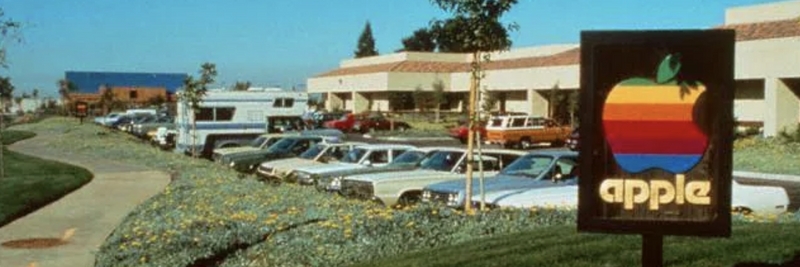
Adam: Meanwhile, Apple is becoming a successful company.
Paul: They were creating Apple IIs in-house. They were still small, tentative, but I think people with a certain amount of vision could see that they could succeed where were many other similar, personal computer ideas were likely to fail. And they started getting some big backing. Some visionary people who had money began to invest in Apple at that point and that changed everything.
Those same people said that they should pursue this word processing program that I had written. And they were actually strongly suggesting to Steve Jobs and others that they should cultivate me and try to get me to improve the program. By then, I had taken my program that I had sold them the first version of, and I had greatly expanded it, made it much more powerful. And I included a computer programming language built into it. There was much, much better. But also I had figured out the secret and they said, “Why don’t you sell us the new version?” I said, “No, no. Let’s do royalties. I’ll keep ownership of the program and you can sell it and you can pay me royalties.”
“Well, how much royalties?”
“I don’t know. 25%, how’s that sound?”
And they said, “25%. Okay. That sounds good to us.”
Adam: It turns out 25% is a huge royalty. The personal computer industry, it would eventually settle on five to eight percent. But this was the early days and they really needed this new version of Apple Writer. And Paul was the only one who could deliver it. More on this idea later. But also Apple needed all the cash it could hold onto. They had manufacturing to scale, which is expensive. So a royalty must have sounded quite attractive to them. Anyways, Paul has to deliver this new version of Apple Writer, Apple Writer II, to Apple.
Delivering Apple Writer

Paul: I flew down to Apple in my airplane, which by the time I got started getting royalties, an airplane was a given.
Adam: Why was an airplane a given?
Paul: Because I had to get to Apple once in a while. And I wasn’t going to ride the bus or whatever other possible mode of transport. So I rode my bicycle to the local airport, put my bike in the airplane, flew the airplane to California, took my bike out and rode up to Apple in my bike. And people went, “How did you get here from Oregon?” They saw the bicycle and they didn’t sort it altogether. Anyway, so I showed up and I had this two floppy disks of a new version of Apple Writer. And I said, “Well, we should make some more copies. I only have two copies.” And Steve Jobs was about to go to lunch and he took one of the copies. I’ll keep this for safekeeping. You can copy the other one. “Okay. Okay,” I said.
So he took off and somebody took the remaining copy of the program and put it in one of two drives that was connected to an Apple II. One’s for reading a disk, one’s for writing a disk. He put them in backwards. Instead of writing a copy of my program onto a blank disk, he wrote a copy of a blank disk onto my program.
Adam: Did you have a copy back in your cabin somewhere?
Paul: Oh, yeah, yeah. No, oh that’s a little different story there. I had copies of my program in an ammo can buried beneath the ground in case my cabin burned down.
Ammo Can Backups
Adam: Paul, he’s constantly saying these things that make me think, wait, what? Say that again. Burying software in an ammo can, it’s one of those. Let’s unpack this story before we get back to Apple headquarters. You see Paul had had this strange incident happened to him. It happened in the early days of his cabin back in the woods in Oregon.
Paul: I was working on Apple Writer. And I could hear the weather getting wild and violent outside. And I just ignored it and I kept on going. And then a lightning bolt struck near the house, not on the house, but near the house. And it was enough of a strike, that that long 1200 foot extension cord carried some of the pulse into the Apple II. And it caused the Apple II to reset so that it was just a blinking cursor with nothing on the screen. And I went, wow, I just lost whatever, an hour worth of work. It turns out that all the content was still in the computer, but the computer had experienced this giant jolt and it had a reset to a what’s called the monitor in the Apple II. And I realized that if I typed in the right numerical code, it would jump back into my program, which it did. So I was able to save it. It hadn’t really reached my content that I had created. It was still in the computer’s memory.
I realized that because I was on top of a hill, that lightning could strike my cabin and that we’d burned down and I would lose everything. So I had a metal waterproof ammo can. And when I was working on a program that I hadn’t sold yet, that I had the only copies, I would regularly dig up this ammo can and put copies in and seal up the lid, which is a fancy, expensive taxpayer-funded ammo can with a waterproof seal around the lid that when you closed it up and put it into the ground, it was dry inside and quite reliable.
Adam: So from then on, Paul always has a copy of his software buried in that ammo can.
Back at Apple
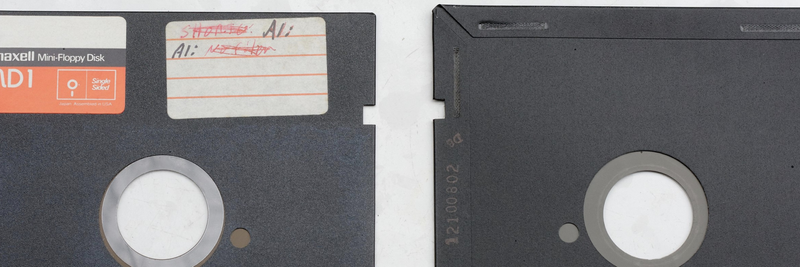
Adam: But back at Apple, back in Cupertino, they want to get Apple Writer into boxes and into stores where it will help popularize the platform and pay Paul nice royalties. And the new version has just been erased.
Paul: So now we had no copies except the one that was in Steve’s car. So anyway, Steve comes back from lunch, he went out to the car and it had been summertime California temperatures, and the disk had scrunched up into a little ball because it had been overheated and the external plastic had wrinkled up in the California sun.
Adam: Oh no.
Paul: Everybody was lamenting. And, oh, this is terrible. And I went and I took a scalpel and I extracted the inside of the floppy disc from its envelope. And it turned out that the media inside the disk was much tougher stuff than the folder it was located inside. I scalpeled another flat, fresh five and a quarter inch floppy disk and put that inside it and made it readable. So that was a save. That was a definite save. I would have had to go all the way back to Oregon. But the point of the story is Steve was really apologetic when he saw how scrunched this disk was. He said, “I’m so sorry about this.” And that’s the only time I’ve ever seen Steve Jobs in a humble and apologetic mode. So the only time I ever saw that in my entire exposure to this person ever is that one day. And it gave me a mistaken impression because people were going, oh, Steve Jobs, watch out.
Software Documentation
Adam: So Apple Writer I is out there and it’s in stores. And Apple Writer II has been delivered and it’s much better. And it has this great royalty agreement, but there’s still a problem.
Paul: And then they said, “We need to write a manual for the program.” How long is this going to take? “Oh, about a year.”
Adam: The problem is, Paul’s software is done. And now he’s not in control. He won’t get his royalties, not until people are buying the program. And people won’t be buying the program without a manual.
Paul: One thing you have to realize is that a year is a good percentage of the lifetime of a program in those, because of how fast things were moving.
Adam: This led to some tension in Paul’s relationship with Apple.
Paul: I would go down to Cupertino and I just wanted to get back to the woods and I just wanted to get things done. And I thought that most people were just standing in the way. For example, the people who were doing the documentation for Apple Writer, that the fact that it took a year, what should have only taken 90 days. I probably let myself express views on that subject regularly because I was losing a lot of royalty income because of that year long delay.
The program only lasted three and a half, four years. And one of those four years was taken up by people writing a manual, which I’d already written a manual, not very well. But all they had to do was take my text and whatever, turned it into Applese, it’s something that was appropriate to an Apple manual. It took forever, couldn’t believe it. And also I said, don’t tell them that they have a year to finish the manual because they’ll take a year to finish the manual. Tell them they have six months and then let them take a year, something like that. And I don’t know why they didn’t understand the principle involved, because once these people heard that the drop dead deadline was a year from then, they took a year to do it.
Tom Clancy Enters
Adam: It did finish though. And it got put into boxes and it got put for sale in computer stores and via mail order. And it became the word processing program. And that meant that some important works from this era were written using Paul’s program.
Paul: Tom Clancy wrote Hunt For Red October using Apple writer. He called me and said, “What happened? This disk can’t be read anymore.” I said do you have one disk for that chapter? Yeah. Well, you need to have at least more than one copy and you need to make backups. It was a conceptual problem. He didn’t understand about backups because up until then, you may be aware that an author of a book, there might be a manuscript. There was one copy of it in the entire world, like War and Peace. Guy walks out with War and Peace and trips over and whatever, falls on the ground. And the wind blows all the pages out into the landscape, all that kind of crazy stuff. But, and nowadays you got to have backup. So that was early on enough that he was able to pretty much recover.
Adam: So how long could this chapter be? How many words does that work out to you think?
Paul: For a typical Apple II ordered up by somebody who was well healed, had 32 kilobytes of memory, which is four times more than the absolute minimum in an Apple II. And my program took eight kilobytes. So there’s 24 kilobytes leftover.
Adam: How long does that make his chapters, I wonder?
Paul: In those days there was no Unicode. So each byte was a character. So in principle, you could have, well, a typical printed page is 2,000 characters.
Adam: Be 24 pages, I think.
Paul: It’s only 12 pages. I’m not very good at math in my head, I must confess.
Adam: It’s neat how the constraints and advantages of Apple Writer, they might’ve shaped novels from this era. Does The Hunt For Red October have short and punchy chapters because of the memory limits of the Apple II, because you could only work process so many words at a time? It seems like it might. For Paul though, the biggest change wasn’t the occasional correspondence with an author. It was something else.
The Royalties
Paul: The royalty money started becoming spectacular. I literally made three million dollars in one year out of royalties in 1983. And that changed everything. I got out of my cabin, bought a nice house and everything changed.
Adam: The money changed Paul. It also changed the personal computing industry. Computers went from a hobby to an essential part of the office landscape. Computers went from being made by two guys named Steve with software by a mountain hermit to the International Business Machine Corporation’s personal computer. And from there, the software industry just kept growing. And Paul thinks that something was lost in this process.
Be a Programmer and a Business Person
Paul: And I think that there’s a myth that teams of programmers can do more than individuals can do. People end up fighting with each other instead of doing the job. I mean, that could be wrong sometimes. But it’s often true. If one person can write a program in 100 hours, then it follows logically that 10 programmers can write a program in 10 hours or something like that. But it’s never true. It’s never true. There’s too much infighting and too much inefficiency in dividing up the tasks between the participants for that to ever work. And there’s a number of very popular books and articles talking about how there’s never any really, truly individual achievement. Everything is a group achievement and those very, very charming ideas, but the history of science contradicts that. Isaac Newton did everything he did alone, escaping the plague at his house in the countryside in England. Albert Einstein pretty much did everything he wanted to do without even talking to other people about what he was doing.
The real luminaries of science at least are all individuals. There’s very few examples where there was a major breakthrough and the Nobel Prize committee had to decide, who do we give the prize to? There’s 10 people involved. I mean, that’s almost never true. And oh, my favorite example of that is Andrea Ghez, she figured out that there was probably a black hole, a large, heavy black hole in the middle of our galaxy, of the Milky Way. And she figured out that if any stars got near it, they would behave in a funny, rapid elliptical way, thereby revealing the presence of the black hole. And she did observations and proved it. And she won and deserves a Nobel Prize. That’s a great success story. And I wish there were more like it.
Adam: So does that mean that you’re… Okay, a young woman who’s very talented software developer contacts you. Is your advice get a cabin in the woods, get a bag of beans?
Paul: I don’t know. I’ve not had the experience, but I don’t know, honest to say, well, I don’t know what I would say. I probably say figured out how to do business as well as programming, which is why I was successful at Apple Writer. By the time the important decisions were made about Apple Writer, I had acquired enough business sense to undo the mistakes I made earlier and say, “Let’s do royalties, boys,” which for as far as they were concerned, was a great bargain for them. They didn’t have to put up front any cash at all. And it was an advantage for me also. And I knew it. By then, I knew what was wrong with my original way of going about it. I was just selling programs outright, which is a bad idea. So I don’t know. I would give that advice.
Adam: I feel like you’re saying not just being a software developer, but being a fully rounded person who knows business.
Paul: Yes. That’s essential. People are now being reduced to cogs in a machine. You’re either a part of an organization that does business at your expense, or you have enough of your own business sense to control the outcome of the projects you’re involved in. So you can’t just be a programmer. That’s a bad idea. You have to be a programmer as well as a business person.
Adam: So that’s the big lesson I personally take from Paul. Think about the business angle. Don’t just be a developer. See yourself as a company of one. I think it can be harder to advance in a company if you’re remote, but if you have a rare and valuable skill and the market needs it, then you sort of get to dictate where you live and how you work. And that’s what Paul’s story is about to me.
Upgrading the Cabin
Anyways, after all this, with his newfound wealth, Paul went on some adventures, but much of his life stayed the same. He mainly upgraded one thing, his cabin in the woods.
Paul: I chose another country location, just a better house. And it had a deck on top that I could put a telescope and look at the stars and it had a lot of pluses. But it was basically the same kind of lifestyle that I wanted, which is out in the woods in an ex-urban location that I could just have my own projects. And so even though the money came in, it didn’t actually change what I wanted to do. I just could do it with more style.
Adam: There is one downside to the money though.
Paul: Certainly when I was living on the street in San Francisco, people wanted to get to know me. They had to have the purest of motives. But now, well, they might just want money. There’s a lot of stories in fiction about people who seem guarded and isolated when they’re older and isn’t that terrible and kind of a [Dickensian 00:38:58] tale. But now that I’ve been in the position of being known to be wealthy, that changes a lot. You have to wonder what people’s motives are.
Adam: Paul is now 76 years old, and most days he’s working on some project. He has a YouTube channel. He has a line of Android apps. And yes, 45 years later, he’s still very happy living alone in the woods.
Outro
Adam: That was the show. If you’re new to the podcast, subscribe and maybe check out episode 66, it’s about SQLite. Super interesting. You can find Paul on YouTube and on his personal website, arachnoid.com. And if you’re a Patreon supporter, I’m going to be releasing some bonus content with Paul onto the Patreon page this month. Speaking of which, if you like CoRecursive and you want to support it, go to patreon.com/adamgordonbell and send me a donation. I mean, don’t sign up and send me your last dollar or anything. I’m not at risk of living on the street. But I do really appreciate everyone who supports me. And it encourages me to keep going.
Electric Duet
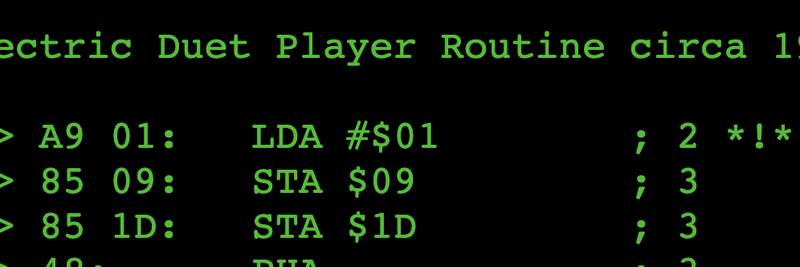
Adam: So now I’d like to end with a personal request from Paul. He asked that I include some music that he created on the Apple II. Paul will explain.
Paul: My all-time favorite program was called Electric Duet. I have the Apple II. And so you’ve had a square wave coming out of the speaker, which made the music sound pretty terrible, but at least you could play musical notes.
After a while, I went, “I wonder if I could get it to play two notes at once. That would be great.” I talked to some of the people at Apple and they said it’s not possible. It’s a CTL output. It’s just only, it’s up or downs. There’s no two anything. And so what I realized was if I made the speaker turn on and off at a very, very high rate of speed, like eight kilohertz or higher, then I could change the width of the pulses going to the speaker and I would get something resembling control and I could have two voices. So I wrote this program called Electric Duet, and it actually did it. It at played two voices at once.
